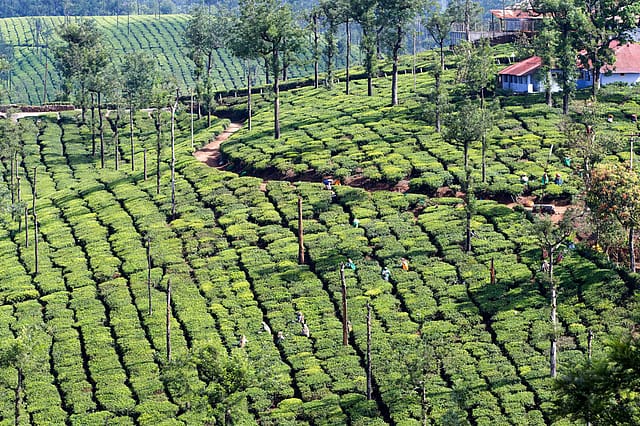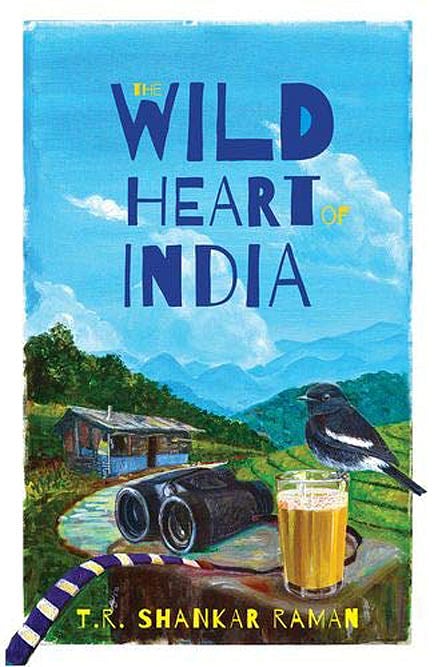The Hills are Alive

Anyone interested in ecology, conservation, wildlife, forests—and in nature in general (and what we’re doing to it) and most importantly, in the happiness and good health of their children and grandchildren—ought to get their hands on this book. And no, be warned—it won’t make you a happy camper for the most part—though there are gleams of sunshine coming through the grey smog of pollution and desecration from time to time.
The author, TR Shankar Raman has spent his working life tramping about the rainforests of the southern Western Ghats (the Anaimalai hills), and the north-east, both internationally famous biodiversity hotspots—studying and observing different species, the problems faced by local people, the battle between ‘development’ and environmental protection. This collection of essays (taken and adapted from articles in the media) is a result of that. He is trained in his field—in how to conduct surveys using scientific methodology and so on, and now works as a scientist with the Nature Conservation Foundation in the Anamalai hills, leading a long-term rainforest conservation and restoration programme.
The essays have been divided into three sections—though all interlinked, of course, thanks to the nature of their subject. The first section, ‘Field Days—an Ecological Journey’ deals with his ‘education’ in ecology through observation, conducting surveys and formally studying the subject—from writing reports to even simple things like learning how to use binoculars properly and taking field notes. For all those eager beavers keen to get out there in the field to do primary ‘research’—be warned: it can be a painstaking, physically taxing, repetitive drudge—no picnic certainly. It can last a few days, or several years, from dawn to dusk—and often through the night too. But yes, the data you gather (scientifically) and the conclusions you arrive at—can hopefully make a difference at the end of it, making it all well worth the while. As are some of the rare and beautiful creatures you might meet. Also, as Raman has shown, you need not have to tramp off into some distant rainforest to do such work: you can cut your teeth in a city wilderness area too—as he (and several others) did, in the Guindy National Park in Chennai. This section has accounts of experiences in the Western Ghats and the rainforests of the North-east—both rich in biodiversity.
2026 New Year Issue
Essays by Shashi Tharoor, Sumana Roy, Ram Madhav, Swapan Dasgupta, Carlo Pizzati, Manjari Chaturvedi, TCA Raghavan, Vinita Dawra Nangia, Rami Niranjan Desai, Shylashri Shankar, Roderick Matthews, Suvir Saran
It is the second section of this book, ‘Conservation: A World of Wounds’ that is most troubling and leaves you with a leaden feel in the pit of your stomach and a gnawing fear for the future of your children. The essays include the troubles faced by some animals on the brink: the blackbuck, hornbills (which are so vital to rainforest re-generation), deer (in Kashmir and Manipur), the bustard, and the wonderful gibbon. Worse, greater Adjutant storks have been reduced to living off garbage heaps outside Guwahati. (That most of the only surviving population of these giant birds survives off a garbage heap in India—is a telling enough statement of the state of things!)
Where Raman really gets into the nitty-gritty is in the chapters dealing with what we have been doing to our natural heritage all in the name of ‘development’ and infrastructure. We’re widening and expanding our road network like crazies (which is also how we drive) through hitherto sacrosanct areas. The number of creatures being killed on highways every day is enormous—and no one really counts. Roads intruding into forests bring huge problems: basically the infusion of ill-intentioned people. Apart from fragmenting forests—and isolating animal populations which sensibly may not want to cross a 16-lane expressway to get from one side to another—they also bring noise, fumes and disturbance. Other ‘linear infrastructure’ projects which we are ramming through our protected areas include railway lines, power lines (which slit the throats of Great Indian Bustards), and canals.
One vexing problem in the North-east is the traditional practice of slash and burn agriculture—jhumming. Forests are clear-felled and burned, crops grown on the rich ashes left behind, harvested, and the area left to re-generate for several years, as the farmers move on to other areas. In the harvested areas, the forests spring up again in the course of time—and the cycle continues: Not very good for wildlife, one would imagine. But if the forests are given long enough to regenerate (and bamboo does grow fast) well then no lasting damage is done. But with burgeoning populations, the turnaround time is being reduced. While the Government is now discouraging this practice—it has only made matters far worse by promoting palm-oil plantations on a large scale—and the industry that comes with it. Once a palm-oil plantation comes up, you can kiss goodbye to your rainforest for good. Tea and coffee plantations—both in the south and the north-east are other (maybe lesser) villains: causing fragmentation of forests, upsetting migratory routes of elephants and sometimes leading to human-wildlife conflict.
Raman makes a very strong case around the use of the word ‘infrastructure’—offering a point of view that few ordinary people (and no one in government) would have even thought about let alone seriously contemplated. We think roads, dams, factories, power plants comprise vital infrastructure needed for development. What about the infrastructure that makes up our country: the rivers, mountains, forests, deserts, meadows, mangroves and grasslands whose contribution to our well being is incalculable? This is the ‘infrastructure’ which, we’re now hell-bent on destroying instead of protecting—and that does not bode well for our children.
But what really puts the lead in your stomach is what the current dispensation—the present government—has gone about doing. They’re busy undermining the very foundations of the Wildlife Protection Act—emasculating it in whichever way possible, by changing the rules: making it so much easier for hitherto protected areas to be invaded and mined, roads to ram through quiet forests, giving industrialists the carte-blanche to do what they like and for heaven’s sake playing god by trying to link rivers. As Raman mentions, quoting Obama, ‘one of the hardest things in politics is getting democracy to deal with something now where the payoff is long term or the price of inaction is decades away.’
The final section, ‘Reflections’ consist of more contemplative and descriptive essays covering diverse subjects—an encounter with a tusker, the felling of great banyan trees, warblers and monkeys among others.
Raman writes clearly and lucidly, though you can sense in some places, how perhaps the scientific temper (and training) has taken precedence over emotive prose. The horror of anthropomorphism looms large—though I’ve always thought that the only way to really get through to people is to mess with their emotions, by whatever means possible! For the most part, Raman describes a situation or experience, minimally—as it is without letting us know really how mad, frustrated, angry, happy, bewildered or gob-smacked it made him! Especially when dealing with nature—emotion holds a huge stake in how we react (not always sensibly agreed, but still!) to a situation. Several of the essays have been co-written with his partner, Divya Mudappa, who often accompanied him on his forays and maybe could have done with a cover byline too!
One big take away from this book is that it shows how you can follow your dreams. What started off with bird-watching for Raman developed into a full-fledged career, which he carved out for himself and which took him to, many wild and wonderful places and gave him the motivation to try and make a difference. Hopefully it should make many youngsters put away their smart-phones and i-Pads (and thinking about becoming the next CEO of Amazon!), and get out there down and dirty where the gibbons sing or the blackbuck still strut.

